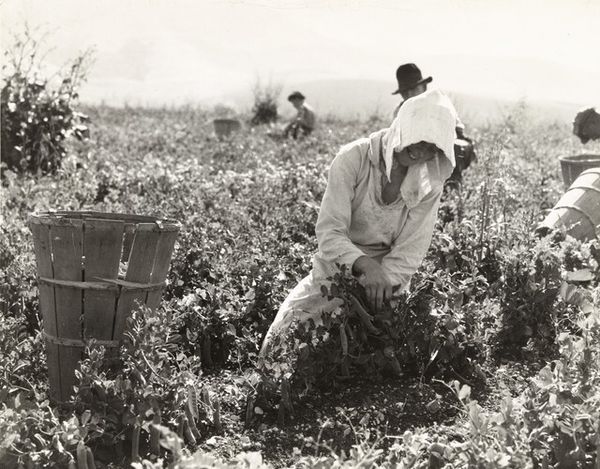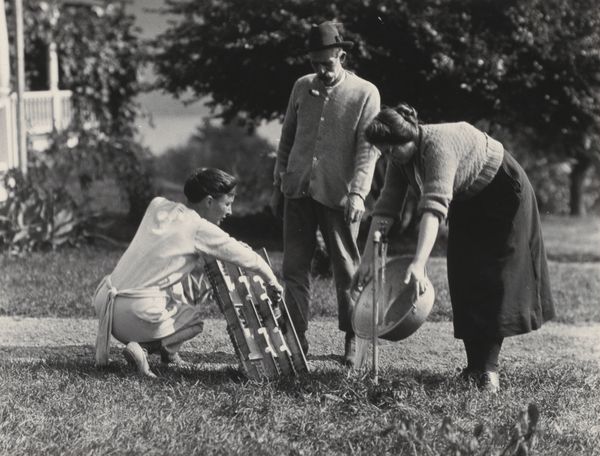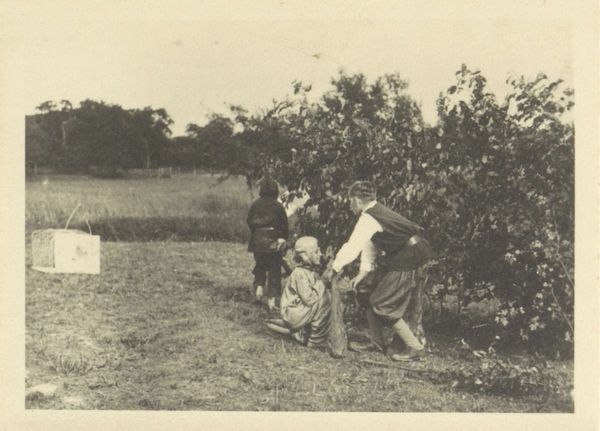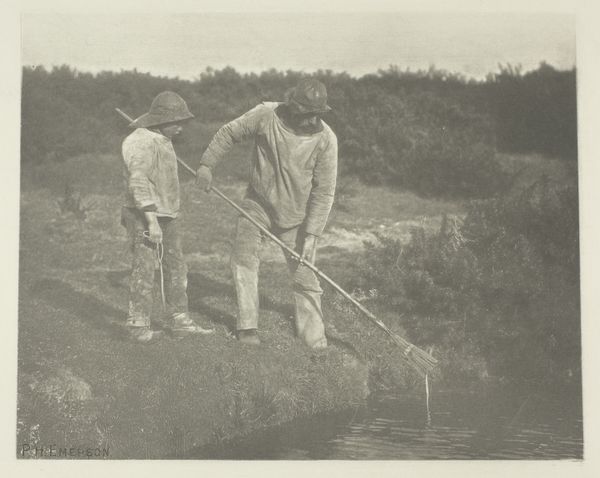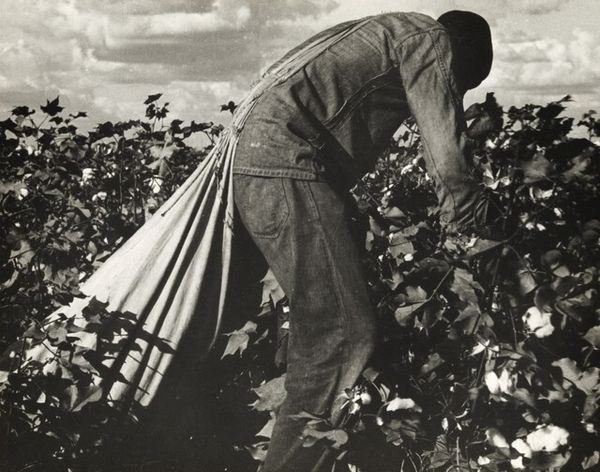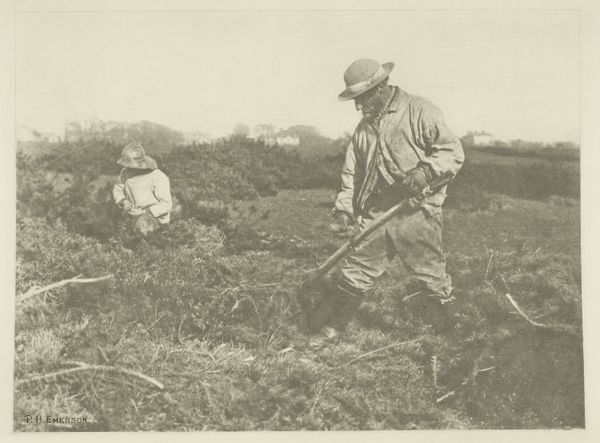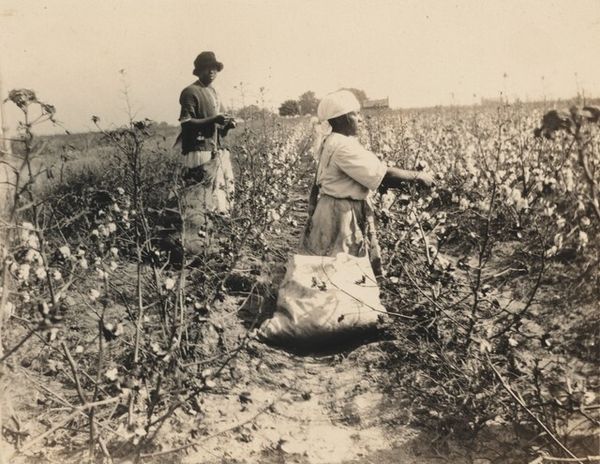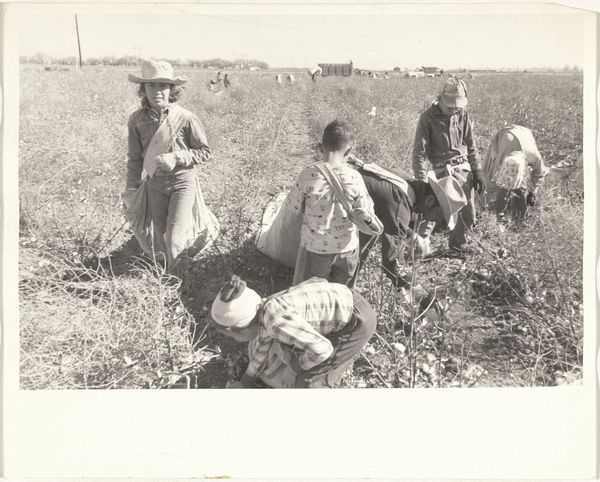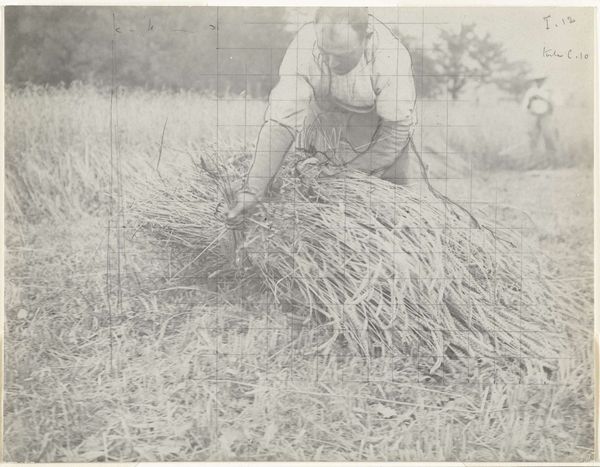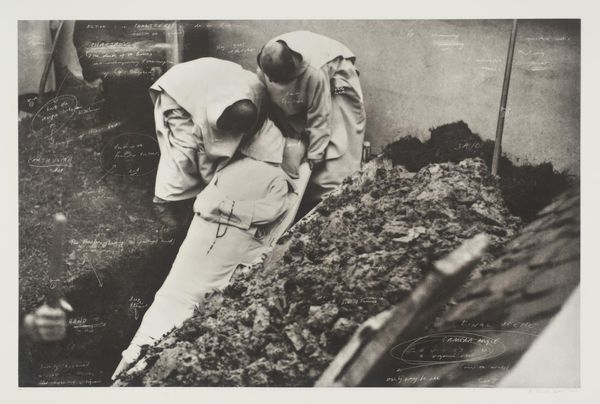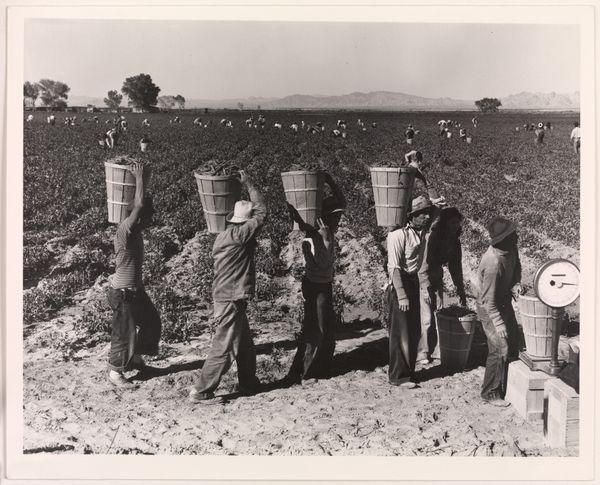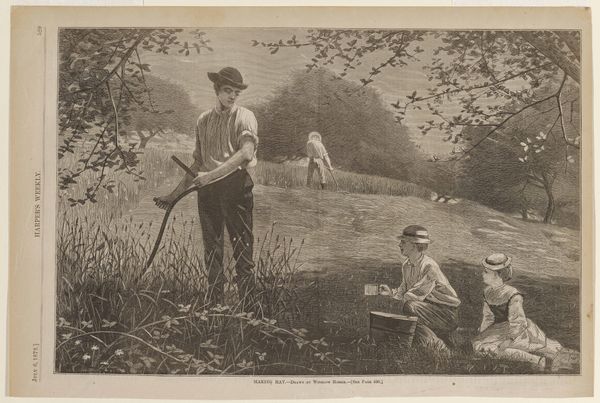
gelatin-silver-print, photography, gelatin-silver-print
#
gelatin-silver-print
#
landscape
#
outdoor photograph
#
black and white format
#
photography
#
gelatin-silver-print
#
monochrome photography
#
realism
#
monochrome
Dimensions: 4 9/16 x 6 9/16 in. (11.59 x 16.67 cm) (image)4 5/8 x 6 11/16 in. (11.75 x 16.99 cm) (sheet)
Copyright: No Copyright - United States
Curator: Before us is a gelatin-silver print, simply titled "Untitled," created in 1911 by Lewis Hine. The scene is stark but compelling. What catches your eye? Editor: The barrels. The size of them dominates the image. Raw wood, staves bound by simple hoops – they look heavy. You immediately understand this photo documents labour. Curator: Absolutely. Hine’s work often functions as social commentary, doesn't it? The figures almost fade into the landscape; the child lifting the barrel makes you think about the ethics of labor, who performs it and what systems and structures make this labor acceptable, expected even. It calls into question societal values. Editor: Exactly. Consider the labor involved in coopering, crafting these containers to transport produce. This process is often ignored. And, of course, we're focusing on who is doing this backbreaking work. What were they harvesting, and where was it going? Mass production of goods relies on these unsung contributions, the harvesting, packing, and carrying. This photograph documents the origin, a clear window into labour and production of our present. Curator: I agree, and notice how this scene isn't staged in a formal setting? It presents the labor so honestly in the rough conditions. The clothing of the people shows both status and labor. How would you describe the use of materials to create an atmosphere that really asks, "who is benefitting?". Editor: There's a rawness here—the texture of the clothing, the grainy silver print itself. I also find myself thinking of Hine, his equipment, and how the work of capturing this image fits into his larger body of work. Did he view himself as also documenting production or purely capturing injustice? Curator: Perhaps both. I do think Hine sought to activate social reform by revealing these very material and ethical conditions in simple, accessible ways. Editor: It certainly leaves a strong impression, a call to reflect on the labor hidden behind what we consume daily. Curator: And also what happens to labour outside factory settings? How does this influence modern day social reform movements? Editor: I agree entirely. It highlights that everything is the product of process. And we all benefit from acknowledging labour.
Comments
minneapolisinstituteofart almost 2 years ago
⋮
Lewis Hine was a documentary photographer, educator, and social reformer. Trained in sociology, Hine taught at the progressive Ethical Culture School in New York City before turning his attention to photography. As a photographer for the National Child Labor Committee (NCLC), Hine traveled the United States to document children in unsafe working conditions in factories, mines, fields, and city streets. Over ten years, he created an indelible record of the human cost of an exploitative labor market, documenting the tired faces of children at the end of their shifts, or even children mutilated by industrial machinery. These disturbing photographs were used in publications and presentations created by Hine and the NCLC, and ultimately promoted sweeping policy changes designed to protect children.
Join the conversation
Join millions of artists and users on Artera today and experience the ultimate creative platform.
